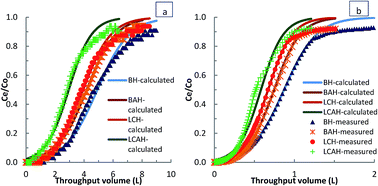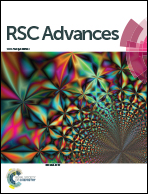Efficient attenuation of 17α-ethynylestradiol (EE2) and tetracycline using novel hybrid materials: batch and column reactor studies
Abstract
Hybrid materials were obtained by modifying natural bentonite (B) or locally collected clay (LC) using hexadecyltrimethylammonium bromide (HDTMA) to obtain bentonite-HDTMA (BH) and local clay-HDTMA (LCH), or by simultaneous pillaring with aluminum and modification with HDTMA to obtain BAH and LCAH. The hybrid materials were used for the efficient attenuation of micro-pollutants, 17α-ethynylestradiol (EE2) and tetracycline (TC), in aqueous solutions under batch and fixed-bed column reactor experiments. Batch data indicated that the uptake of EE2 and TC by the hybrid materials was slightly affected at low and high pH within the pH range of 4.0–10.0. The uptake was not affected by varying the initial sorptive concentration (1.0–10.0 mg L−1 for EE2 and 1.0–20.0 mg L−1 for TC) and the background electrolyte (NaCl) concentrations (0.0001–0.1 mol L−1). Moreover, the attenuation of EE2 and TC by these hybrid materials was fairly efficient. Within a contact time of 60 min for EE2 and 240 min for TC, an apparent equilibrium between the clay and solution was achieved. Kinetic modeling showed that the data were fitted well to the pseudo-second order (PSO) and fractal-like-pseudo-second order (FL-PSO) kinetic models compared with the pseudo-first order (PFO) model because a low value of the least square sum was obtained for these two models. The fixed-bed column results showed that a high breakthrough volume was obtained for attenuation of EE2 and TC using the hybrid materials. Furthermore, the breakthrough data were fitted well to the Thomas equation; therefore, a very high loading capacity was estimated for EE2 and TC for the hybrid materials. These hybrid materials are useful materials in the remediation of aquatic environments contaminated with these two micro-pollutants.


 Please wait while we load your content...
Please wait while we load your content...